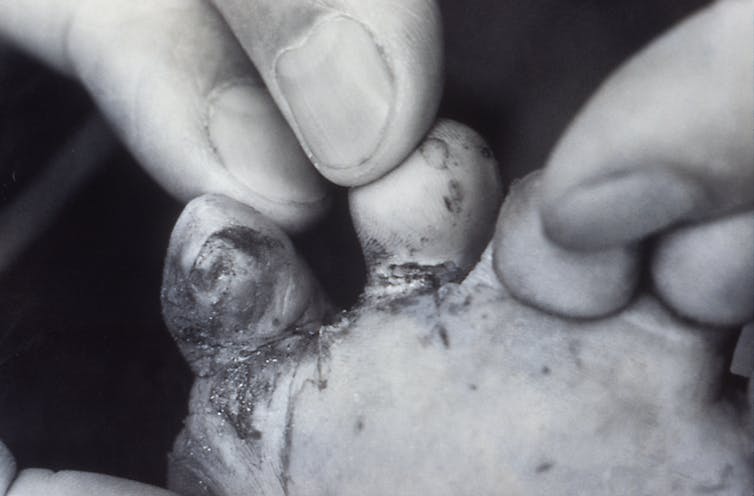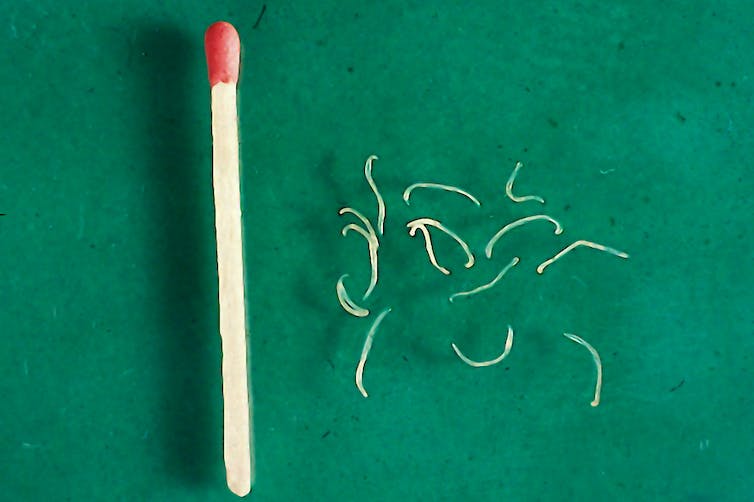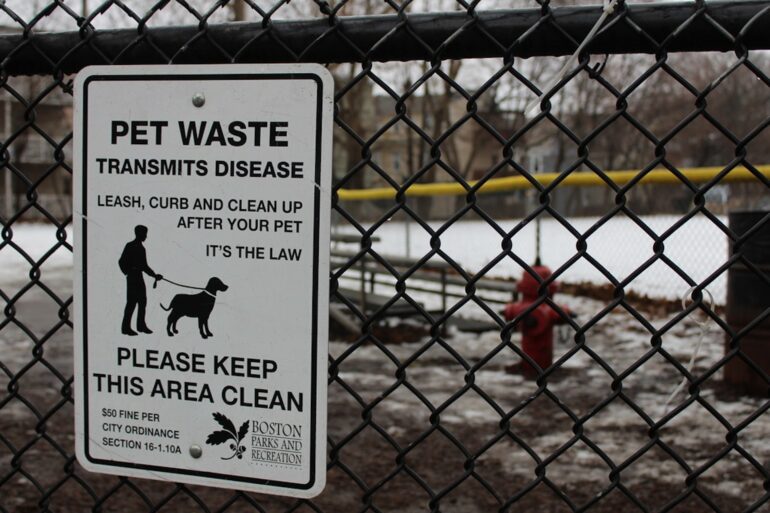Have you ever been out on a walk and as you take that next step, you feel the slippery squish of poop under your foot?
It’s not just gross. Beyond the mess and the smell, it’s potentially infectious. That’s why signs reminding pet owners to “curb your dog” and scoop their poop have been joined in some places by posted warnings that pet waste can spread disease.
As a small-animal primary care veterinarian, I deal with the diseases of dog and cat poop on a daily basis. Feces represent potential zoonotic hazards, meaning they can transmit disease from the animals to people.
The reality is that waste left to wash into the soil, whether in a neighborhood, trail or dog park, can spread life-threatening parasites not just among dogs and cats, but also to wild animals and people of all ages. A 2020 study found intestinal parasites in 85% of off-leash dog parks across the United States.
While human diseases caused by soil-transmitted parasites are considered uncommon in the U.S., they infect as many as an estimated billion people worldwide. Signs that remind you to pick up after your pet are not just trying to keep public spaces clean; they’re urging you to help safeguard your community’s health.

Parasites can enter your body through broken skin and set up shop, as in this hookworm infection.
CDC, CC BY
Abandoned poop’s impact on people
Common dog poop parasites include hookworms, roundworms, coccidia and whipworms. Hookworms and roundworms can thrive in a variety of species, including humans.
Their microscopic larvae can get into your body through small scratches in your skin after contact with contaminated soil or via accidental oral ingestion. Remember that next time you’re outside and wipe sweat from your face with a dirty hand and then lick your lips or take a drink – it’s that simple. After hose or rain water has rinsed contaminated poop into the soil, these parasite eggs can survive and infect for months or years to come.
Once in the human body, both hookworm and roundworm larvae can mature and migrate through the bloodstream into the lungs. From there, coughs help them gain access to the digestive tract of their host, where they leach nutrients by attaching to the intestinal wall. People with healthy immune systems may show no clinical signs of infection, but in sufficient quantities these parasites can lead to anemia and malnourishment. They can even cause an intestinal obstruction which may require surgical intervention, especially in young children.
Additionally, larval stages of roundworms can move into the human eye and, in rare cases, lead to permanent blindness. Hookworms can create a severely itchy condition called cutaneous larva migrans as the larval worm moves just under the skin of its host.

Adult hookworms.
Agency-Animal-Picture via Getty Images
Once the parasite’s life cycle is complete, it may exit the host’s…



